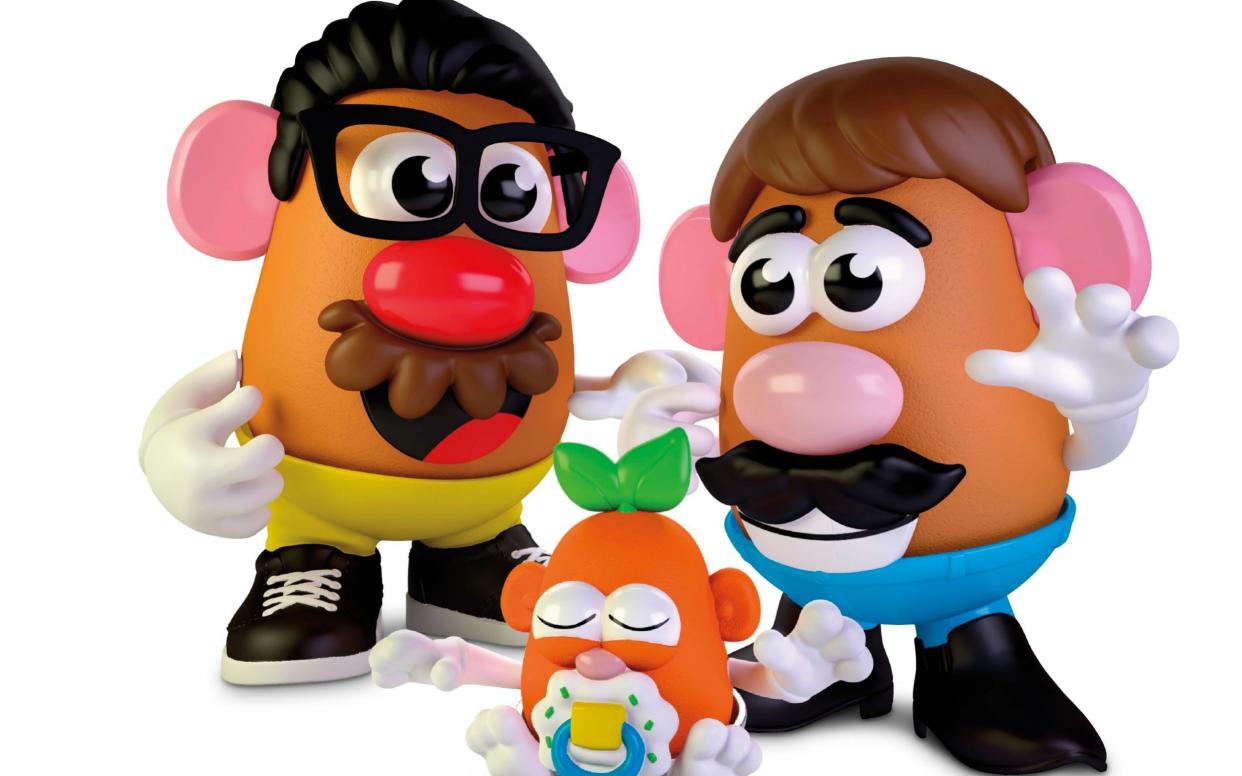From Potato Head to gender neutral dolls: the unstoppable rise of woke toys

The name’s Potato Head. Mr Potato Head. Except it no longer is. The distinctive tuber-themed toy, with detachable eyes, nose, mouth, arms, hat and facial hair, has dropped the honorific.
Potato Head has dispensed with formalities and become gender-neutral - and has caused no end of fuss on social media as a result.
US toy company Hasbro announced last week that the 69-year-old family of Mr Potato Head toys, which became a 21st century children’s favourite following a starring role in Pixar’s Toy Story films, would henceforth be known as simply Potato Head, to “promote gender equality and inclusion.”
Piers Morgan was immediately triggered, and on Twitter he interpreted the news as yet another sign that “woke imbeciles are destroying the world”. In the Telegraph, Michael Deacon described it as the latest example of the “online culture war”.
Who was actually offended by Mr Potato Head being male? I want names. These woke imbeciles are destroying the world. pic.twitter.com/CwsaX5D2Ue
— Piers Morgan (@piersmorgan) February 25, 2021
The truth is, however, toys have always been gender-neutral by nature. Children can choose to play with whichever products best ignite their imagination, creating a sense of fun that is hard to emulate as an adult - we all remember our favourite toys as children, whether that be a battered teddy-bear with holes in its padded belly, a plastic Action Man figure missing one arm, or piles of Lego bricks ready to be assembled into our very own Wonders of the World.
It is the marketing and branding strategies of toy companies that have for so long promoted gender stereotypes, and perpetuated ideas of there being certain toys for certain genders, from Action Man figures to Girl's World 'styling heads'.
But times are changing. Besides Hasbro, other leading toy companies have embraced gender-neutral toys in recent years, including Mattel, the owners of Barbie, who launched the Creatable World range of dolls in late 2019. The dolls come with a range of possible hairstyles and clothing and were a response to children no longer wanting “toys dictated by gender norms,” said Kim Culmone, Senior Vice President of Mattel Fashion Doll Design.
Last year, a California state assembly member proposed a new bill which would require large retailers to stop dividing toys into boys’ and girl’s sections - or face a $1,000 fine. Many toy brands, including Play-Doh, Mega Blocks and CoComelon, now make a concerted effort to use gender-neutral advertising which appeal to all children.
Jess Day, a campaigner with the group Let Toys Be Toys, which wants fewer gender stereotypes in the toy industry and successfully lobbied 15 UK retailers to remove gender-specific advertising and shelving, told the Telegraph that “There is definitely an industry trend away from developing and marketing toys by gender.”
Day said: “I don't think anyone really believes that a girl can't possibly want to play with a train, or a boy can't possibly want to play with a doll. And what do people think is going to happen if they do?
“If you believe that there are general tendencies for boys and girls to want to play with different toys, then children don't need to be told which ones they're meant to want. Taking away these signs and labels allows children to choose freely, and has no downside.”
In our world, dolls are as limitless as the kids who play with them. Introducing #CreatableWorld, a doll line designed to keep labels out and invite everyone in. #AllWelcome
Shop now: https://t.co/UyaYXb0BYf pic.twitter.com/k2tnPDCCiM— MATTEL (@Mattel) September 25, 2019
In addition to campaign groups like Let Toys Be Toys, reports and analysis from charities, academics and psychologists into the negative impact gendered toys can have on children’s development have become more prevalent.
The Fawcett Society, a leading gender equality campaigning charity, warns that harmful gender stereotypes - often found in toys - are significantly limiting children’s potential, as found in its landmark report from the Commission on Gender Stereotypes in Early Childhood.
Dr Christia Brown, a Professor of Developmental Psychology and Director of the Centre for Equality and Social Justice at the University of Kentucky, says that the impact toys have on children’s development shows how important it is that they represent and appeal to all children, regardless of gender. The mixed response to Hasbro’s announcement shows how divided society can be over certain issues, says Dr Brown, but also how willing and positive people are feeling towards the general trend of inclusivity.
Dr Brown said: “I think that people forget sometimes that toys are profoundly important to children, and all toys are educational. They don’t have to be special science toys to be educational - all toys teach different skills, they help children grow, they help children to envision themselves doing other things. Toys teach children about what the world is like, so they need to represent every part of the world to truly help them - by showing different careers and experiences that aren’t limited by gender.”
Debates aside, companies increasingly adapting their marketing strategies to make products more inclusive will allow children to play more freely without worrying about enjoying the “wrong” toys. And for someone who was always more into Nerf guns than Baby Annabell, this seems like a good thing.

